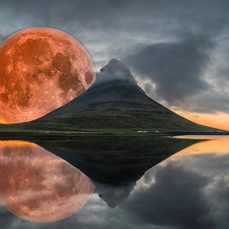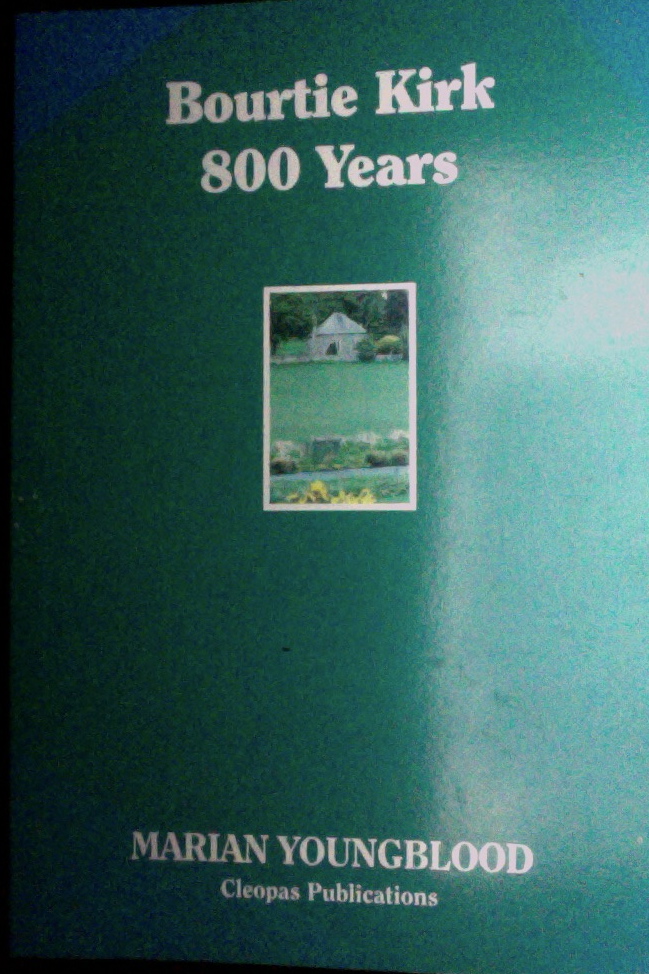Crop Circles and Ancient Lammastide
CROP CIRCLES AND ANCIENT LAMMASTIDE
A Crop Circle Reverie Ten Years On…

Overhead 360º view from within the simple swirled crop circle of August 24, 1995 at Culsalmond, Aberdeenshire
Crop circles are not new. The phenomenon is centuries-old, embedded in folklore in South Africa and China, achieving sparse comment from English academics in the 1600s; noted in police records and farming journals in 1890; by military and ‘classified’ sources through the 1950s and ’60s.
It was not until 1980, however, that the general populace began to notice them. Since 1990 size and intricacy have developed, mimicking computer fractals, fourth dimensional reality, esoterica known only to quantum physicists. Nearly 30 years after that Thatcherite time, discussion favours excitement over fear, anticipation rather than suppression, belief more than ridicule. The appearance of upwards of 10,000 reported ‘genuine’ crop circles in twenty-nine countries worldwide has brought the subject into the mainstream. It has become ‘cool’ to talk about what they might mean.
In the English countryside since 2005, designs have become so complex, it is natural to speak of codes and mathematical sequences and quantum physics and astronomical numbers. As simple ellipses expanded into trailing solar flares, hypercubes, calendrical geometry and astrophysical complexity, we became mesmerized by beauty in the summer landscape, breathless with anticipation of what would come next.
In 2009 the pick of the crop finished at the end of August. Fields in September were conspicuous by their absence.
They’ve got us where they want us: on the edge of our seats.
In a lull between September’s close and next year’s crop of never-before-seen designs, what have we learned? Why are we being gifted such inspiration?
What associative ideas do they generate? What emotions do they trigger? Where do they mostly appear?
Crop Circles as Seasonal Meditation and Earth Connection

White Horse and star guidance sextant crop circle, Alton Barnes solstice 2009
Many delving, however briefly, into this phenomenon would associate the random appearance of crop circles with that other kind of circle: the ancient and sacred stone circle. That the majority of designs in England has focused on the hallowed precincts of great sacred sites like Avebury and Sillbury Hill, Wiltshire, Rollright Stones, Oxfordshire and within sight of ancient burial mounds of Hampshire is no coincidence. The same is true for appearances near ancient ancestral sites in other countries: Holland, Germany, Italy, Slovenia, Latvia; even the Serpent Mound, east of Cincinnati, Ohio. In all this exotica, it is easy to miss one particular circle of great simplicity but infinite importance in the farmland of Aberdeenshire, Scotland, which appeared at the end of Lammas, 1995.*
A little patience and we can find a context, a common link.
First off, like the siting of ancient stone circles, crop circle placement is not random.
Dowsers, diviners, engineers, television cameramen and aircraft pilots can all attest to electromagnetic anomalies occurring in cleared agricultural land where Neolithic and Bronze Age farmers placed their mounds, erected their trilithons, buried their dead. Feng shui proponents, who detect minute variations in electrical body pulses, have commented on the extraordinary fluctuations of energy contained within the relatively small area concentrated on Wiltshire’s sacred sites; Alton Barnes, with its twin village Alton Priors, rank high on the electromagnetic scale. It is not surprising, therefore, that this select valley houses not only the prehistoric White Horse, but was home to Milk Hill swallow configuration (2008) and multiple coded designs in 2009: whirling dolphins, star tetrahedron and the sextant (star navigational instrument) created in three stages; contemporary appearances at Alton Priors include – in perfect timing – the exquisite eight/infinity symbol of 08/08/08 (August 8, 2008) and the swallow with coded tail of June 2009.
- Woven corn dolly centre at Sillbury Hill crop circle August 3, 2009
- Woven centre, reminiscent of ancient corn dolly craft, Sillbury Hill August 2009
- White Horse and Star Guidance sextant Crop Circle, Alton Barnes, Wiltshire
- Overhead 360º view from within the simple swirled crop circle of August 24, 1995 at Culsalmond, Aberdeenshire
- Annual horse fair and Travelling People’s Market, Aikey Brae, Buchan
Moving the Magnetic Matrix
You don’t have to be a rocket scientist to watch your compass needle fluctuate wildly at Yatesbury, Wiltshire; a newly-charged car battery die on the edge of a field at Sillbury Hill, near Avebury or your camera spontaneously recharge in the centre of a newly-laid crop design at Alton Barnes. These magnetic phenomena are commonplace to students of ‘leyline’ energy meridians, with which the Wiltshire basin and Cotswold range are filled. But it is significant that Yatesbury was home to the dragonfly glyph of June 3rd and Phoenix of June 12th 2009. Sillbury Hill has always deviated instruments; its great chalk mound resisting man’s excavations to discover its secret; but it opened its fields to decoration of extraordinary complexity on August 3rd, 2009 when plain swirled circles were found to contain at their centres the intricately woven patterns reminiscent of the medieval corn-dolly craft.
According to a representative of the British Feng Shui Society, an area of Britain ranking second only to the Avebury-Yatesbury-Windmill Hill energy vortex is the largely forgotten agricultural plain of Scotland–lying between the 56th and 57thN parallel–in the counties of Angus, Aberdeenshire and Banff. World attention has focused on names like Bishops Cannings, the Roundway, and Chiselden. But how many have heard of Sunhoney, Easter Aquhorthies, Culsalmond or Old Rayne?
Among the excitement of first circles decorating Wiltshire and Oxfordshire in the 1990s, the contemporaneous appearance of a single swirled design in wheat in Aberdeenshire was overlooked. Yet their locations–within ancient sacred landscape, in proximity to prehistoric ritual sites of previously huge importance to a country population–and the time of year in which they appeared have a common link.
Reconnecting us to our Primeval Earth Calendar
In ancient times, the Celtic calendar revolved round the farming year: birds start to nest at Candlemas (February 2nd), Vernal Equinox fields are prepared for sowing; Beltane (May 1st) held a huge fire festival celebrating the seeded land; fire festivals were perpetuated ritually and with deliberate intent, until well after the Reformation. Only then did Church and State combine to desecrate such ritual, relegating it to the realm of pagan superstition (pagan = L. paganus = country-dweller), implication: simple country folk knew no better. Midsummer solstice was a time of rejoicing for the bounty beginning to appear in fruit and crops; Lammas (August 1st) marked the onset of harvest, usually over by autumnal equinox; and the Celtic Year ended and began anew with the festival of Hallowe’en/All Hallows Day. Christmas was superimposed on the earlier festival of winter solstice, when the land was in almost total darkness, with farming people praying for the return of the Light.
In an abundance of festivals, the greatest for agricultural and rural families was that of Lammas. While its pivotal date was August 1st, the festival coincided in a good summer with the actual harvesting of grain. In most communities it began three weeks before and continued until three weeks after that date–ending around August 24th. Through the medieval centuries, every community in the Land had a Lammas fair dedicated to the local patron saint, a Horse Fair, a fair to compete, display wares, buy and sell food, fruit and harvested bounty.
Aberdeenshire, like many of the southern counties was rich in such events. The names, if not the actual ethos of the celebration, linger in local names. Old Rayne has its Lourin’ Fair; annual Aikey Fair occurs at Aikey Brae near Old Deer. And Culsalmond had the greatest fair of them all: St Sair’s Fair. Named after one of the earliest Brittonic saints to spread Christianity in the North, St Serf was the patron of the St Sair’s Horse and Feeing Fair. Not only serving as a forum for employing (feeing) farm servants, it attracted horse and cattle fanciers from all over the kingdom. While Aikey and Lourin continue to show horses, St Sair’s Fair did not survive World War II.The stance at Jericho on the Hill of St Sairs has dissolved into the sod of the Glens of Foudland, like the tiny chapel to St Sair which used to mark the spot. Even after such fairs were officially banned in 1660, St Sairs was going strong in 1722. Horses were being traded in 1917 on the hill. Change in farm practices and two wars were its undoing.
What is significant, however, is not that great stallions used to parade these hallowed slopes, but that St Sairs happened within a sacred enclave of ancestral ritual circles, burial mounds and avenues just like Avebury and Sillbury Hill. The Culsalmond recumbent stone circle lies buried among the gravestones of the ruinous pre-Reformation kirk; Neolithic carved stone balls were found on the farms of Jericho, St Sairs and Waulkmill, within a sacred avenue flanked by three stone circles and two burial mounds. Bronze Age urns from Colpy and Upper Jericho have, along with charred body parts and Neolithic carved stone ladles, found their way into museums in Aberdeenshire, Edinburgh and London. More than one hundred flint arrowheads and several hundred flint implements have disappeared from this ancient place–and the archaeological record.
It was here on the last day of Lammas 1995 that a crop circle sent a reminder—a simple swirled design in wheat—to trigger in this ancient landscape a memory of connection to its agricultural past and, perhaps, if we are listening, the key to our communal future.
©2009 Marian Youngblood
Lammas 2019 Update
Crop circles continue to amaze a wider world audience, with drone footage clearly making life easier on farmers, with fewer footprints to inflict crop damage.
Attracting an increase in human interpreters, crop designs seem to have elevated messages to the psychic/intuitive level — viz. the computer chip program crop circle at Chualar, Salinas, CA appearance of December 30, 2013.
The Windmill Coincidence
For the last thirty years crop circles have appeared, mostly in Wiltshire and the Chalk Downs of Salisbury and English southern uplands, but not exclusively so. Dutch crop circles have (happily) besieged windmills, man-made canals and tulip fields. Frequent Downs designs have appeared close to functioning windmills, highlighting ancient ways of life—but wait.
In just the last decade it has become clear to us that the harnessing of water and windpower is more urgent than we have ever known.
In hindsight, is it mere coincidence that the solitary Aberdeenshire crop circle of Lammas 1995, top, appeared on the Colpy-Culsalmond farming estate responsible for the pioneer (and largest) private wind-farm to power the North of Scotland, until the official opening (by Prince Charles) this week of the Beatrice Offshore Wind Complex, off Wick (Sutherland)?
Crop Circle Creators have been telling us all along. We just weren’t listening.
©2019 Marian Youngblood

















